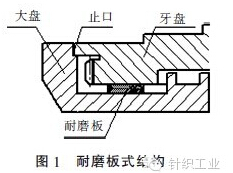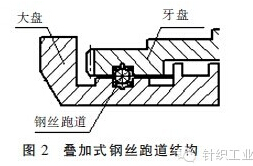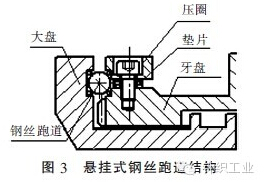Circular knitting into a loop system (enterprise called into yarn ones, referred to as large ones) and more, high speed, high yield, flower-shaped changing fast, good quality fabric, less process, strong product adaptation, it has developed rapidly. According to its processing fabric (called academic positions inside the plant commonly known as gray) species to specific division, has the following categories: 1, single-sided series circular knitting; 2, double circular knitting class.
1. the process requirements
· Circular knitting yarn is woven into a tubular cotton, equipment often requires emergency stop.
· Require a flexible jog run function, work process requires the motor to run smoothly.
· Require high starting torque.
· Operating ambient temperature is too high.
2. the system components
(A) electrical control system parameters can be set for the completion of the operation, simple button operation, fault indication stops.
2.1, a microcomputer control panel, and highly integrated control circuit, convenient parameter setting and reliable operation of the button, to display visual information.
2.2, the drive is an important part of the motor (motor) AC control system can achieve the purpose of changing the motor speed by controlling the output frequency. You can adjust the speed of a wide range of start, stop, slow performance set by the parameters that can be done quickly and smoothly to avoid shocks.
2.3, the electrical control box lines clear and orderly, the entire cabinet in scraps inside, effective ventilation to prevent dust. Electrical wiring in the shelter, taking into account the aesthetics and safety.
(B) the transmission is controlled by a frequency converter stepless variable speed motor. Motor with V-belt or belt (toothed belt) driven by the drive shaft gears, gear while passing to the market, thus boosting syringe needles carrying the running, knitting. Drive shaft extends above the knitting machine, driven by the amount of yarn feed tray conveyor yarn. Requires transmission smooth operation, no noise.
3. the advantages of high-performance vector inverter system
Arfa low frequency torque converter output steady, starting torque of 180%.
Smooth soft start function · inverter device to reduce the impact on the grid, superior protection features greatly improved the process equipment, improve the quality of the product.
· Good thermal design, fully meet the long-term work in high-temperature device environment.
4. the technical requirements
Knitting machine industry requirements for the control of the inverter is more concise, general access terminal control start and stop, given the frequency of the analog multi-speed or use a given frequency. Knitting machine work load is heavy, requiring low speed to jog or fast, so mechanical and electrical drive control performance, low torque requirements have a greater ability to control the drive motor at low frequencies. General application in the knitting machine, the drive to the vector control without speed sensor (also called open-loop vector) mode, assure accuracy and low-frequency electromechanical steady speed high torque output.
In knitting machine operation, and must not allow the motor to reverse rotation phenomenon, otherwise the needle bed needle is bent or broken pins. Some knitting machine access-way bearing, can not be considered. If the system is entirely dependent on reversing reversing motor control, you need to set reasonable parameters, on the one hand to be set to prohibit reverse function, on the other hand need DC braking function. Also note that the phenomenon does not appear stall to avoid breakage and other damage. The program uses the analog input at a given frequency. Simple circuit (omitted) knitting machine requires faster response when starting, low frequency and large torque output; shutdown to be smooth, softer, in order to protect the needle bed. Therefore reasonable to set the table parameters are fully guaranteed round machine performance, the principle is through the mediation of P0.19, P9.00 parameters to get the best low torque output capability and reduce vibrational circular machine high-speed operation, control by starting mediation (P1 group) as well as the acceleration and deceleration time parameters (P0 group) to get frequency adjustment smoothness.
5. the use of effects
Alpha Series low frequency inverter output side jog more straightforward and low torque converter insufficient to overcome most shortcomings, both to protect the electrical equipment, and bring significant economic benefits.
Smooth soft start function · inverter device to reduce the impact on the grid, superior protection features greatly improved the process equipment, improve the quality of the product.
· Good thermal design, fully meet the long-term work in high-temperature device environment.
· PLC increased the degree of automation equipment system control.


